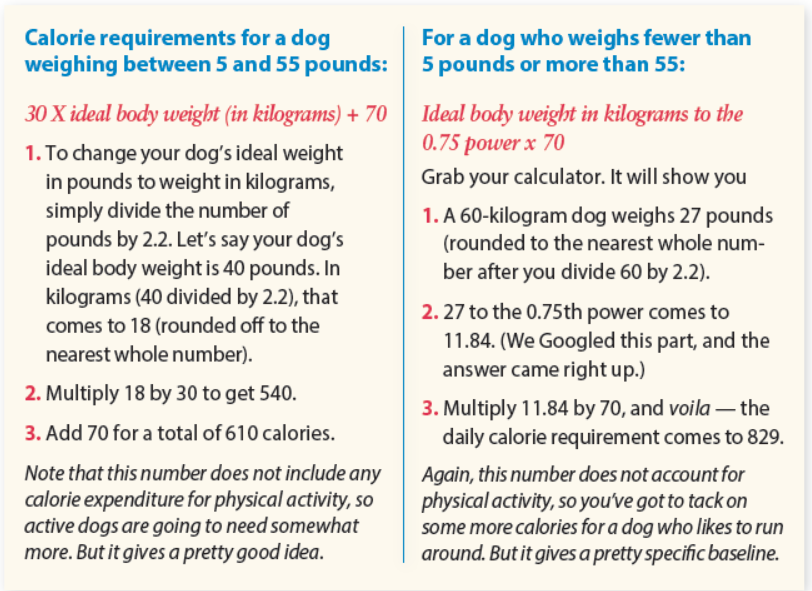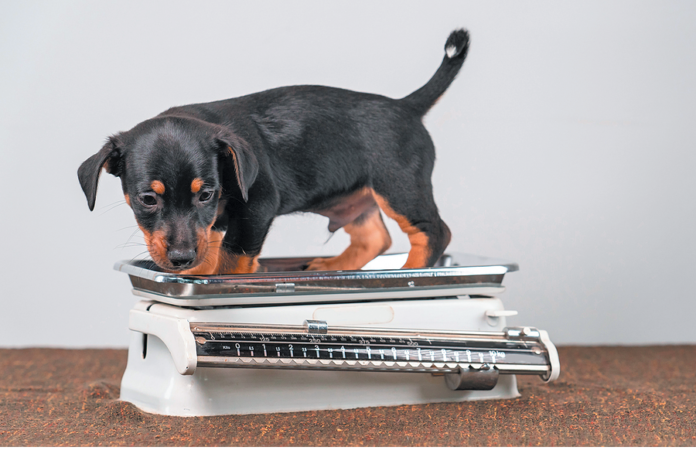Many people wonder just how many calories their dog should consume. With an estimated 40 percent of dogs in this country who weigh more than they should, it’s a reasonable question. The good news: once your veterinarian confirms your suspicion that your dog is too plump, there are a couple of different ways to arrive at the answer.
Ballparking it
If your pet has less than 10 percent of her weight to lose, you may be able to safely switch to a lower calorie over-the-counter food that has more nutrients per calorie so your pet doesn’t suffer a nutrient deficiency while you reduce her calorie intake. And you won’t have to do a detailed analysis of her specific calorie needs.
Start by looking for foods that are about 300 calories per cup or less. Then check the feeding directions. The range recommended in the feeding directions is the amount of food the company assumes your pet is eating to make sure she gets all the nutrients she needs. If you find you need to go lower than the recommended range to get (or keep) your pet lean, it’s time to call your vet.

“For pets that were previously overfed or only have a little weight to lose, some over-the-counter foods may be okay for managing their weight,” says Deborah Linder, DVM, head of the Tufts Obesity Clinic for Animals. “But once you need to feed less than the recommended range on the pet food bag, that’s a sign you may need a special veterinary diet available only at the doctor’s office.”
Keep in mind that you’re managing more than just the calories in your dog’s kibble. Check all the calories in her treats, chews, and snacks. Those can add up and sometimes contribute more calories than the diet itself. Dogs should get no more than 10 percent of their daily calories from food other than their main balanced pet food.
To make things a little more concrete, take a look at the chart we have created for you. First get your pet’s ideal weight from your veterinarian, and then check it against her calorie requirement. The chart adds in some calories to account for physical activity and the quicker rate of metabolism (calorie burning) in some dogs.
Once you get the calorie requirement, you can see the calorie level on the label of your dog’s food and dole out appropriate-size portions — as long as those portions aren’t smaller than the lower amount on the recommended range. (Don’t forget to make room for up to 10 percent of calories as treats, both for training and just because.)
Getting specific
If you want to skip the chart and learn the exact number of calories your own particular dog requires, or if your dog weighs more than 100 pounds and is therefore “missing” from the chart, there are a couple of equations to get you there. They are not for the faint of math. But an online calculator will make it much, much easier.
One calculator we like can be found at Pet Nutrition Alliance. It will do the math for you: https://petnutritionalliance.org/







